-
 bitcoin
bitcoin $109667.069529 USD
-3.03% -
 ethereum
ethereum $3936.685804 USD
-4.07% -
 tether
tether $1.000493 USD
0.01% -
 xrp
xrp $2.771823 USD
-4.74% -
 bnb
bnb $957.805027 USD
-5.34% -
 solana
solana $196.735100 USD
-6.68% -
 usd-coin
usd-coin $0.999727 USD
-0.01% -
 dogecoin
dogecoin $0.227355 USD
-5.12% -
 tron
tron $0.335205 USD
-0.81% -
 cardano
cardano $0.779256 USD
-3.59% -
 ethena-usde
ethena-usde $0.999900 USD
-0.06% -
 hyperliquid
hyperliquid $42.492095 USD
-6.61% -
 chainlink
chainlink $20.501853 USD
-4.34% -
 avalanche
avalanche $28.952606 USD
-11.21% -
 stellar
stellar $0.356038 USD
-3.93%
How do I repay a loan borrowed for margin trading on Binance?
To repay a margin loan on Binance, transfer the borrowed asset to your Spot Wallet and use the "Repay" function—interest accrues per second, so early repayment reduces costs.
Sep 22, 2025 at 05:54 pm
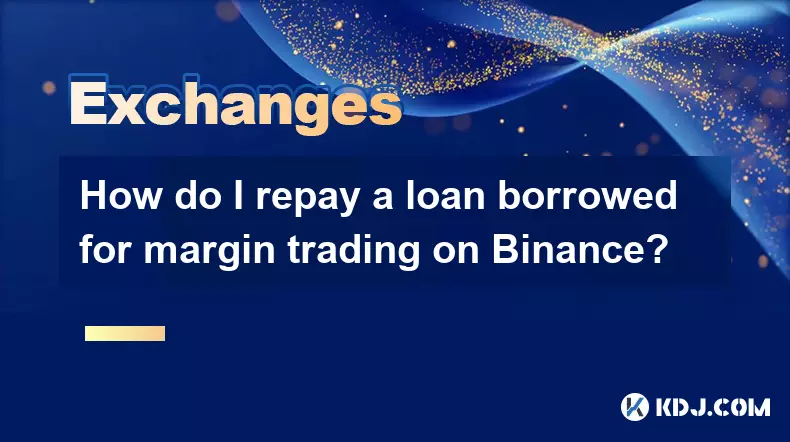
Understanding Margin Loan Repayment on Binance
1. When engaging in margin trading on Binance, users borrow assets to increase their trading position. Repaying the borrowed amount is essential to avoid liquidation and additional fees. The repayment process is integrated directly into the Binance platform, allowing traders to settle their debts manually or automatically.
2. Users can access the margin account section under the 'Funds' tab. Here, all active loans, interest rates, and repayment statuses are displayed. Each borrowed asset must be repaid in the same type of cryptocurrency that was originally taken. For example, if a user borrows 1 BTC, they must return exactly 1 BTC plus accrued interest.
3. Interest accumulates on a per-second basis and is charged every hour. Failure to repay on time increases the total debt and raises the risk of automatic liquidation. Traders should monitor their loan-to-value (LTV) ratio closely, as exceeding the maintenance margin triggers forced sales of collateral.
4. Binance supports both full and partial repayments. Partial payments reduce the principal and future interest but do not close the loan entirely. To fully settle a loan, the entire borrowed amount plus accumulated interest must be returned.
5. The platform allows users to set up auto-repayment options during high volatility periods. This feature helps protect positions from sudden market swings by automatically using available funds in the spot wallet to cover liabilities when LTV reaches critical levels.
Steps to Manually Repay a Margin Loan
1. Log in to your Binance account and navigate to “Wallet” then select “Margin Account.” Ensure you are viewing the correct margin type—either cross or isolated—depending on where the loan was initiated.
2. Locate the “Repay” button next to the borrowed asset. Clicking this opens a repayment interface showing the outstanding principal and pending interest. The system calculates the total amount due at that exact moment.
3. Enter the amount you wish to repay. If you want to clear the entire debt, click “Max” to populate the full balance. Confirm that your Spot Wallet holds sufficient funds of the same asset to cover the repayment.
4. After confirming the details, submit the repayment request. The transaction processes instantly, reducing your loan balance and updating the LTV ratio in real time. A successful repayment generates a confirmation message and updates your financial records.
5. Check your transaction history under “Loan Records” to verify the update. It’s advisable to keep screenshots or export data for personal accounting, especially for tax reporting purposes related to crypto transactions.
Automatic Repayment and Risk Management
1. Binance offers an auto-repay function linked to price movements and LTV thresholds. When enabled, the system draws funds from your Spot Wallet to repay part or all of the loan if your collateral value drops near the liquidation level.
2. This mechanism acts as a safety net during rapid market downturns. However, reliance solely on auto-repayment can lead to unexpected fund deductions from your spot balance, potentially affecting other trading strategies.
3. Users can customize notification settings to receive alerts before auto-repayment activates. These warnings allow manual intervention, giving traders control over which assets are used and how much is repaid.
4. In cases where the Spot Wallet lacks enough funds for auto-repayment, Binance proceeds with partial liquidation of collateral assets. This action aims to restore the LTV below the maintenance threshold and prevent total loss.
5. Maintaining a buffer of stablecoins or the borrowed asset in your Spot Wallet significantly reduces the likelihood of forced liquidations and ensures smoother repayment operations.
Common Issues and Solutions
1. Why can’t I repay my margin loan? This usually occurs when there’s insufficient balance of the borrowed asset in your Spot Wallet. Transfer the required cryptocurrency from another wallet or exchange before attempting repayment.
2. Does repaying early reduce interest charges? Yes. Since interest is calculated per second, settling the loan ahead of schedule minimizes the total interest paid. The system stops accruing interest immediately after repayment is confirmed.
3. Can I repay using a different cryptocurrency than the one borrowed? No. Binance requires repayment in the exact same asset. Converting other tokens manually via the spot market is necessary if you don’t hold the original borrowed coin.
4. What happens if I don’t repay my margin loan? Continued non-payment leads to increasing debt due to compounding interest. Once the LTV exceeds the liquidation threshold, Binance automatically sells your collateral at market prices, often at a loss.
Disclaimer:info@kdj.com
The information provided is not trading advice. kdj.com does not assume any responsibility for any investments made based on the information provided in this article. Cryptocurrencies are highly volatile and it is highly recommended that you invest with caution after thorough research!
If you believe that the content used on this website infringes your copyright, please contact us immediately (info@kdj.com) and we will delete it promptly.
- Bitcoin Crash Watch: Glassnode Signals Potential Cooling Phase
- 2025-09-26 20:25:12
- Bitcoin's Slow Grind: Is the Crypto Market Primed for a Burst?
- 2025-09-26 20:25:12
- BePay, Bitcoin Rewards, and Web3 Investments: A New Era in Dubai
- 2025-09-26 20:30:01
- Spinning Wheels, Fundraisers, and Crypto Traction: What's the Connection?
- 2025-09-26 20:30:01
- Cryptos to Watch: BlockchainFX, Remittix, and the Meme Coin Mania
- 2025-09-26 20:30:01
- Euro Stablecoin, Banks, and the BEST Wallet Token: A New Era for Digital Finance?
- 2025-09-26 20:30:15
Related knowledge
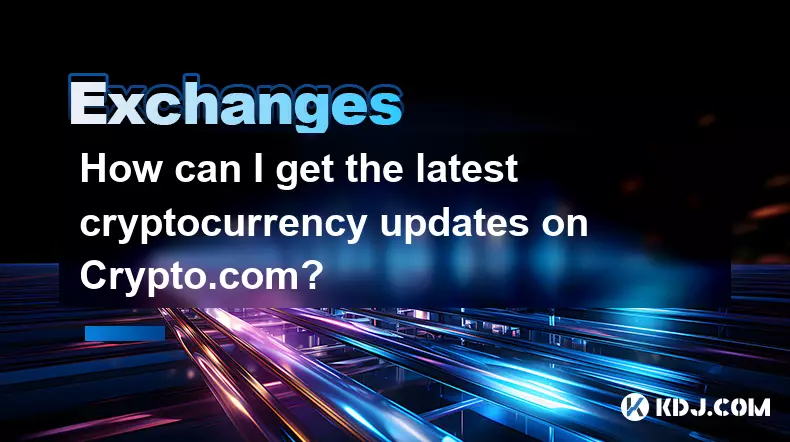
How can I get the latest cryptocurrency updates on Crypto.com?
Sep 26,2025 at 07:54am
Accessing Real-Time Crypto Market Data on Crypto.com1. Navigate to the Crypto.com website or open the mobile application to access live price charts a...
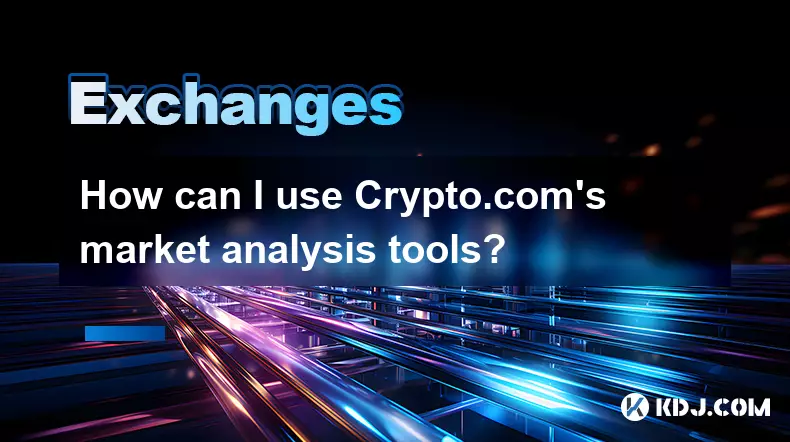
How can I use Crypto.com's market analysis tools?
Sep 23,2025 at 01:54am
Understanding Crypto.com’s Market Analysis Dashboard1. Accessing the market analysis tools begins with logging into your Crypto.com account through th...

How can I unlink my Crypto.com payment method?
Sep 23,2025 at 12:54am
Understanding Payment Methods on Crypto.com1. Crypto.com allows users to link various payment methods including credit cards, debit cards, and bank ac...
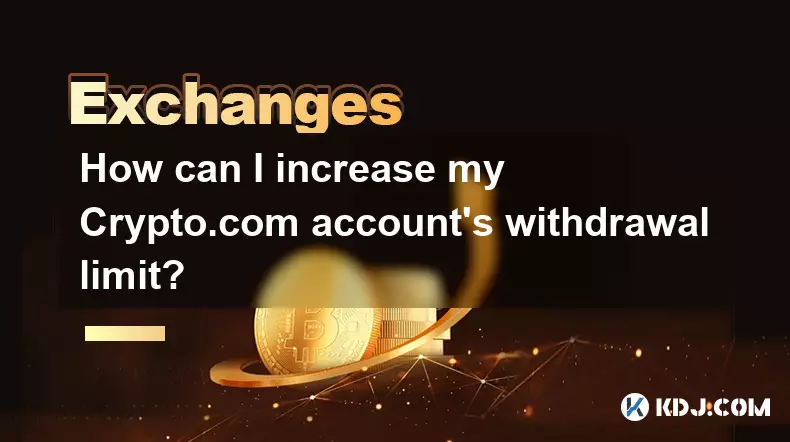
How can I increase my Crypto.com account's withdrawal limit?
Sep 23,2025 at 10:37am
Understanding Withdrawal Limits on Crypto.com1. Crypto.com enforces withdrawal limits to enhance account security and comply with regulatory standards...
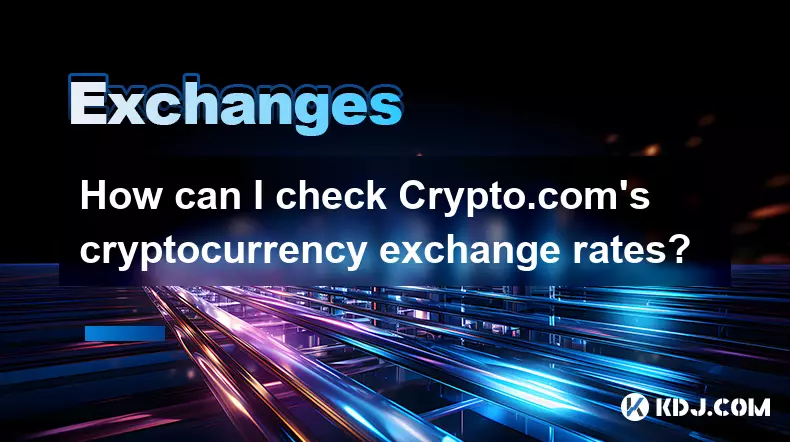
How can I check Crypto.com's cryptocurrency exchange rates?
Sep 26,2025 at 01:54am
Accessing Real-Time Crypto.com Exchange Rates1. Navigate to the official Crypto.com website or open the mobile application. Both platforms display liv...

How can I participate in liquidity mining on Crypto.com?
Sep 23,2025 at 09:36am
Understanding Liquidity Mining on Crypto.com1. Liquidity mining allows users to earn rewards by providing assets to decentralized finance (DeFi) pools...

How can I get the latest cryptocurrency updates on Crypto.com?
Sep 26,2025 at 07:54am
Accessing Real-Time Crypto Market Data on Crypto.com1. Navigate to the Crypto.com website or open the mobile application to access live price charts a...

How can I use Crypto.com's market analysis tools?
Sep 23,2025 at 01:54am
Understanding Crypto.com’s Market Analysis Dashboard1. Accessing the market analysis tools begins with logging into your Crypto.com account through th...

How can I unlink my Crypto.com payment method?
Sep 23,2025 at 12:54am
Understanding Payment Methods on Crypto.com1. Crypto.com allows users to link various payment methods including credit cards, debit cards, and bank ac...

How can I increase my Crypto.com account's withdrawal limit?
Sep 23,2025 at 10:37am
Understanding Withdrawal Limits on Crypto.com1. Crypto.com enforces withdrawal limits to enhance account security and comply with regulatory standards...

How can I check Crypto.com's cryptocurrency exchange rates?
Sep 26,2025 at 01:54am
Accessing Real-Time Crypto.com Exchange Rates1. Navigate to the official Crypto.com website or open the mobile application. Both platforms display liv...

How can I participate in liquidity mining on Crypto.com?
Sep 23,2025 at 09:36am
Understanding Liquidity Mining on Crypto.com1. Liquidity mining allows users to earn rewards by providing assets to decentralized finance (DeFi) pools...
See all articles










































































